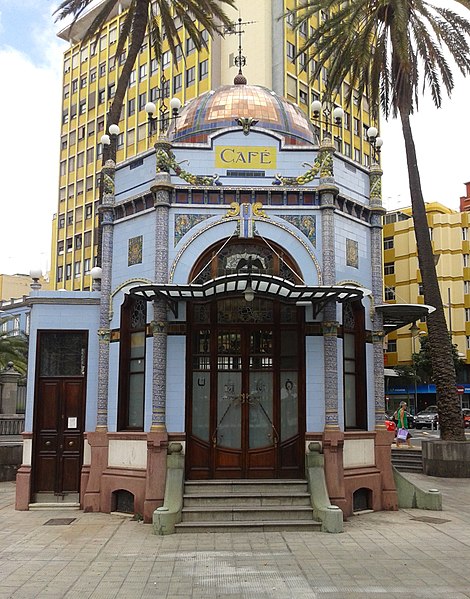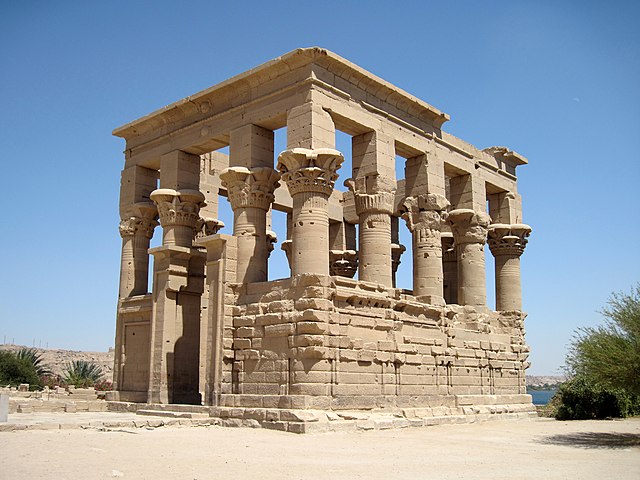Historically, a kiosk was a small garden pavilion open on some or all sides common in Persia, the Indian subcontinent, and in the Ottoman Empire from the 13th century onward. Today, several examples of this type of kiosk still exist in and around the Topkapı Palace in Istanbul, and they can be seen in Balkan countries.
Late Art Nouveau kiosk (1923) in Las Palmas de Gran Canaria
Trajan's Kiosk from 1st century BC on Agilika island, Egypt
The German Fountain at the Hippodrome of Istanbul
Fortín's Kiosk, México
In architecture, pavilion has several meanings;It may be a subsidiary building that is either positioned separately or as an attachment to a main building. Often it is associated with pleasure. In palaces and traditional mansions of Asia, there may be pavilions that are either freestanding or connected by covered walkways, as in the Forbidden City, Topkapi Palace in Istanbul, and in Mughal buildings like the Red Fort.
As part of a large palace, pavilions may be symmetrically placed building blocks that flank a main building block or the outer ends of wings extending from both sides of a central building block, the corps de logis. Such configurations provide an emphatic visual termination to the composition of a large building, akin to bookends.
The Sophienlust Pavilion at Schloss Burgk in the Thuringian Highlands
Pavilion at the Botanical Garden of Hokkaido University
Pavilion in Huế, Vietnam
Küçüksu Pavilion in Istanbul, Turkey








